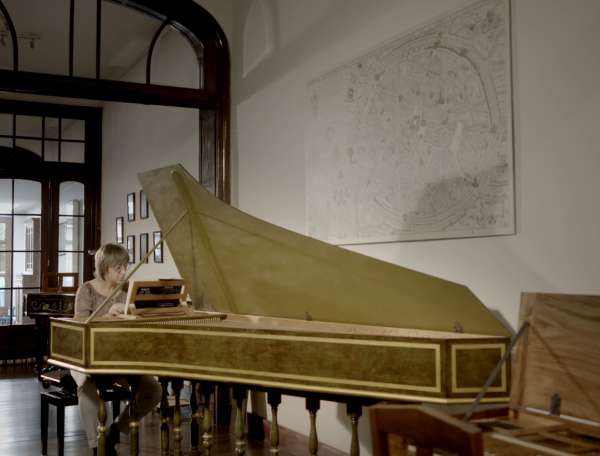

The Well-Tempered Clavier I No. 21 in B-flat major
BWV 866 performed by Bart Naessens
at home in Bruges, Belgium
Behind the music
Short and uncomplicated
Sometimes you already catch a whiff of the Fugue theme in the Prelude
In the Baroque, the key of B-flat major was associated with grand, elevated qualities as well as modest and even dark, melancholy ones. As usual, authors are not in agreement on the subject. Here, Bach clearly opts for the somewhat lighter side of B-flat major. This Prelude and fugue in B-flat major is one of the shorter and least complicated pieces included in the Wohltemperirte Clavier.
The Prelude is a truly ‘preluding’ one. It opens with a sequence of characteristic keyboard figures – more passage work than real melodic material – followed by an extremely free passage that is strongly reminiscent of an improvised cadenza. The Prelude ends with a rising festoon of notes that definitively sets the key of B-flat major.
“Sometimes you already catch a whiff of the Fugue theme in the Prelude,” says the Belgian harpsichordist, organist and ensemble conductor Bart Naessens, whose home we visited for this recording. This seemingly improvised Prelude flows quite seamlessly and organically into one of the most rigid fugues of the whole collection, which is even rather academic at first sight. But Bach would not be Bach if he did not also seek out the harmonic limits within this relatively strict framework.
Das Wohltemperirte Clavier, BWV 846-893
Composing 48 keyboard pieces in all 24 keys was the sort of challenge Bach enjoyed. In each of the two parts of the Wohltemperirte Clavier, he brought together the musical couple prelude and fugue 24 times; twelve in minor keys and twelve in major. In the preludes, he gave free rein to his imagination, and demonstrated mathematical tours de force in the fugues. In contrast to the iron discipline Bach had to apply to his church compositions, here he could abandon himself to intellectual Spielerei without worrying about deadlines.
The first part of the Wohltemperirte Clavier dates from 1722, although it contains some music that was written in the preceding five years. There is less clarity about the history of part two. Bach compiled this second manuscript only around 1740, although once again some of the preludes and fugues it contains date from a much earlier period. Bach described the target group for this collection of pieces as follows: ‘Zum Nutzen und Gebrauch der Lehr-begierigen Musicalischen Jugend, als auch dere in diesem studio schon habil seyenden besonderem ZeitVertreib’ (For both the education of the industrious musical youngster and the enjoyment of those well-versed in this material’).
- BWV
- 866
- Title
- Prelude and fugue in B-flat major
- Epithet
- no. 21 from The Well-Tempered Clavier I
- Instrument
- harpsichord
- Genre
- harpsichord works
- Serie
- Das Wohltemperirte Clavier I
- Year
- 1722 or earlier
- City
- Cöthen (or Weimar?)
With support from
Prins Bernhard Cultuurfonds
Extra videos
Vocal texts
Original
Translation
Credits
-
- Release date
- 11 May 2018
-
- Recording date
- 22 March 2017
-
- Location
- Bruges, Belgium
-
- Harpsichordist
- Bart Naessens
-
- Harpsichord
- Geert Karman after Henri Hemsch
-
- Director
- Jan Van den Bossche
-
- Music recording, edit and mix
- Guido Tichelman
-
- Camera and interview
- Gijs Besseling
-
- Producer
- Hanna Schreuders
-
- With support from
- Prins Bernhard Cultuurfonds
Discover
Help us to complete All of Bach
There are still many recordings to be made before the whole of Bach’s oeuvre is online. And we can’t complete the task without the financial support of our patrons. Please help us to complete the musical heritage of Bach, by supporting us with a donation!

